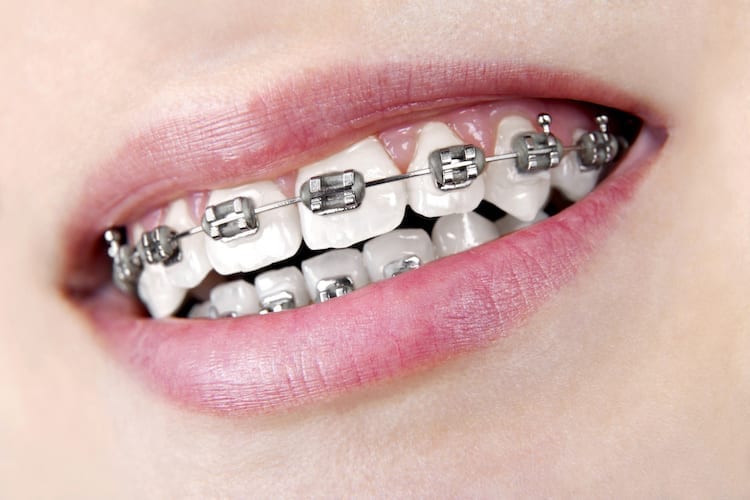Are you searching for an experienced orthodontist in Flower Mound, TX near you?
Visit Dr. Wayne Sankey of Flower Mound Orthodontics for compassionate dentistry. We offer a complete range of orthodontic treatments for patients of all ages. Whether you want to address a simple or a complex orthodontic concern, we can work with you to find the best solution for your smile.
Find The Right Orthodontic Treatment For Your Smile
As a trusted orthodontist near you, Dr. Sankey can address alignment and bite issues through personalized treatment planning and custom solutions. With advancements in orthodontics, a wider range of solutions is available for patients of all ages. To yield the best results, our team takes the time to thoroughly examine your teeth and jaw, discuss your options, and choose the best solution for you.
What Can Braces Treat?

Braces can treat a wide range of dental health and cosmetic issues. After a comprehensive exam by an orthodontist, they can recommend which type of orthodontic treatment is right for you. Dr. Wayne Sankey offers dental braces as part of his orthodontic services in Flower Mound, Texas.
Patients most commonly need braces because they have crooked or overcrowded teeth. If left untreated, both conditions can affect your smile’s overall health and function. Patients with crooked or crowded teeth typically have difficulty properly cleaning their teeth and gums. As a result, they are at a higher risk of developing tooth decay or gum disease.
Another reason a patient may need braces is to correct a complex bite problem. If the teeth don’t properly align, an orthodontist may recommend dental braces to realign your teeth and correct your bite.
Our team at Flower Mound Orthodontics works with our patients individually to assess their dental needs and create a custom treatment plan for them.
Common Types of Dental Braces
Aside from traditional metal braces, we also offer a full range of orthodontic treatments, including Invisalign and clear ceramic braces. Our team will recommend the best solution after a one-on-one consultation with Dr. Sankey.
Invisalign
Invisalign can effectively correct a wide range of orthodontic concerns, from mild to moderate. It is a popular orthodontic treatment that uses clear, removable aligners to help patients achieve a straighter smile. The aligners look similar to teeth whitening trays and are designed to fit comfortably over your teeth
Clear braces can treat the following conditions:
Invisalign Teen
Invisalign can be an effective solution for teens who want to close gaps, achieve a straighter smile, or address issues such as overbite, crossbite, and crowded teeth. The Teen version differs from traditional Invisalign treatment because it has a blue compliance dot that allows you to track how often your child wears their aligners. Teens and children who undergo Invisalign treatment also benefit from removing their aligners to brush, floss, and eat without restriction.
Clear (Ceramic Braces)
Ceramic braces are made of clear materials, which are often less noticeable when compared to other orthodontic treatments, such as traditional metal braces. For this reason, teens and adults who want a straighter smile without the embarrassment of visible treatment typically seek out ceramic braces.
Traditional Metal Braces
Traditional metal braces are one of the most common solutions for addressing bite and alignment problems. Using archwires and brackets, metal braces are permanently attached to your natural teeth for the duration of treatment and can only be removed by your orthodontist.
Due to advancements in orthodontics, metal braces are more comfortable than ever. Designed using high-quality steel, metal braces straighten your teeth using metal brackets and arch-wires.
General Braces FAQs
General braces are a go-to choice for teeth straightening. Learn more by reading the answers to these frequently asked questions.
How should you take care of your teeth with braces?
While undergoing orthodontic treatment, it is extra important to practice good oral hygiene. Brushing your teeth after eating is a good way to ensure food does not get stuck between your braces or appliances. Your dentist and orthodontist will tell you specific foods to avoid, but avoiding sticky, chewy, hard food is in your best interest.
If your orthodontic appliance is removable, we recommend you take it out while eating and clean it before putting the appliance back in.
What materials make up braces?
Braces can be made up of a variety of materials. They are usually made of metal but can be clear or ceramic. Clear braces are known to be less visible but may also become stained. If you have concerns about what material to choose for braces, talk to your dentist and discuss the best options for you and your bite.
How long do patients have to wear braces?
Treatment time for braces depends on the individual’s bite and how their jaw responds to treatment. Most treatment time is between 6 months to 3 years, but on average, it is about 18 months.
How much do teeth move per month with braces?
While undergoing braces treatment, teeth typically shift about one millimeter per month. This is not a noticeable amount to the human eye. Most patients with braces begin to notice a difference after about 3-4 months.
Do teeth get weak after braces?
Your teeth will feel very different after braces are fitted and put on. They may feel loose or like they have already shifted, but your teeth are equally strong before braces as after treatment. Often, once you straighten your teeth, your bite is stronger due to proper alignment.
What is the age limit for braces?
There is no age limit for braces. Anyone can undergo orthodontic treatment with braces at any time. Teeth shift is easiest and quickest in teenage years, but anyone of any age can benefit from braces treatment. Aligned teeth have many benefits. These include improved speech, chewing, and confidence!
Is braces treatment painful?
Braces may feel uncomfortable at first. Many patients report achy pain when teeth are shifting. You may take an OTC pain reliever to help regulate this. Some patients also report feeling pressure against their teeth, which is not painful. If a wire or bracket breaks, it may poke into your gum, causing slight pain and discomfort. If this occurs, call our office, and we will schedule your appointment as soon as we can fix this issue.
Orthodontics in Flower Mound, TX
Dr. Sankey is an experienced and respected orthodontist in Flower Mound, TX. He takes pride in offering personalized orthodontic treatment for patients of all ages. If you want to achieve a straighter smile or address a bite problem near you, call (972) 539-4747 to request a visit and thorough consultation.

